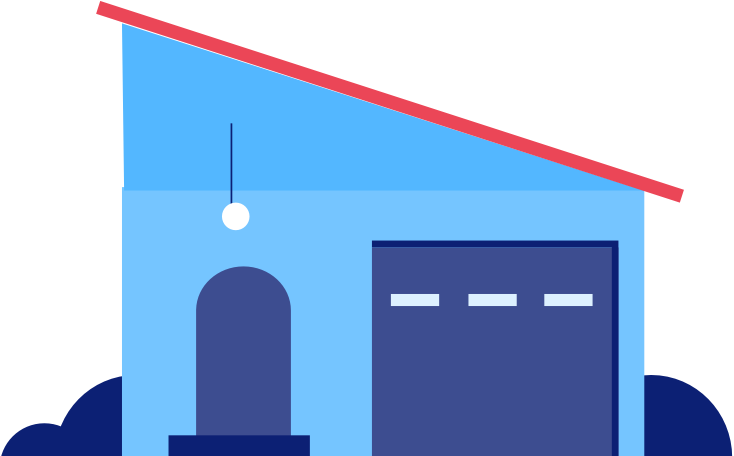5-min read

While it can be a challenge to purchase a home with a lower-than-average income, there are several loan options and programs available that can help make it possible. Let’s go over how to buy a house with low income, what steps you can take to prepare and your mortgage options.
Can I buy a house with low income?
Yes. There is not a specific minimum income to qualify for a mortgage and there are various loan types and programs designed to help eligible buyers cover a down payment or even closing costs. However, you’ll still need to plan accordingly for your monthly mortgage payments, insurance, ongoing expenses and a portion of your down payment and closing costs. Planning ahead for these expenses will go a long way in preparing you for buying and owning a home.

Mortgage loan snapshot
Quickly get a free, no-credit-hitting estimate of how much you could borrow.
How to buy a house with low income
If you’re thinking about buying a house but don’t have a high income, there are things you can do to prepare yourself. Take steps to boost your credit score, pay down debt, create a budget and more. Your income isn’t the only deciding factor when it comes to getting a mortgage. Lenders will also consider your credit score, debt-to-income (DTI) ratio, employment history and down payment. And there are a variety of home loan options for low income buyers, too.
Maximize your credit score.
Your credit score, or FICO® Score, can range from 300 to 850. The higher the score, the better when it comes to getting a mortgage. To get an idea of where you stand, check your credit score and review your credit history to make sure it’s accurate. You can access your report once a year for free at annualcreditreport.com. If you’re a current U.S. Bank client, you can check your credit for free with our tool. Consistently pay your bills on time and work on paying down debt if you’re looking for ways to boost your score.
Pay off your debt.
Lenders measure your ability to repay what you borrow by evaluating your debt-to-income (DTI) ratio. Your DTI ratio is the amount of recurring debt you have, not including items like utilities or cell phone bills, relative to your monthly income. It’s calculated by taking your total monthly debt payments and dividing it by your gross monthly income. By decreasing your total debt, you’ll improve your DTI ratio.
A good rule of thumb is to aim for your mortgage payment alone to be less than 28% of your current gross income and your total DTI ratio to be 45% or less (including your mortgage payment). But, you may qualify for a mortgage with a higher ratio in some instances, depending on your qualifications. For example, if you have a gross income of $30,000 ($2,500 per month), your total credit card debt, auto and mortgage payments can’t be more than about $1,125 per month (45% of $2,500) including your mortgage payment of roughly $700 (28% of $2,500).
Establish a budget.
There are several expenses that come with buying a home. These include down payment and closing costs, monthly mortgage payments, insurance and ongoing expenses like repairs and maintenance. Creating a budget and knowing exactly how much you can afford to spend each month will help prevent you from taking on more than you can comfortably handle. Consider your future plans, down payment options and the ongoing costs of homeownership. Property taxes, homeowners insurance and utilities are expenses that will continue as long as you own your home, so be mindful of that as you’re planning.
Save for a down payment.
Your down payment represents your initial investment in your home. The more you can pay upfront, the lower your monthly payments and the less interest you’ll pay over the life of the loan. If you can save for a down payment of 20% or more, you’ll show the lender that you’re invested in the purchase and committed to making your mortgage payments. In return, the lender may offer you a lower interest rate.
Although a down payment of 20% or more has its advantages, there are mortgage options with low or no down payment requirements (we’ll cover more on this in a moment). Keep in mind that depending on the type of loan you choose and the amount of your down payment, you may have to pay private mortgage insurance (PMI) or a mortgage insurance premium (MIP). These protect the lender against any loss if you fail to pay your mortgage.
Enlist the help of a co-signer.
In some cases, a co-signer may be able to use their income and assets to help you qualify for a mortgage. The lender will consider the co-signer’s information in addition to yours in determining whether you’ll be approved for a mortgage. This reduces your risk to the lender by giving them someone else to fall back on if you’re unable to make your monthly payments. However, it’s worth noting what a huge responsibility this is for a co-signer. Making your payments on time will be especially important to ensure their credit is protected.
Consider first-time homebuyer programs.
If you’re a first-time homebuyer, there are a variety of programs across the U.S. that offer loans, grants, tax credits1 and other down payment assistance. They’re available for eligible buyers who need assistance with down payment or closing costs. These programs are offered by federal, state, county or local government agencies, nonprofits or employers. Availability and qualification requirements vary.
The American Dream program, offered by U.S. Bank, helps buyers with limited resources become homeowners, especially low-to-moderate income (LMI) borrowers and in LMI neighborhoods. Connect with a U.S. Bank mortgage loan officer for more information about programs available near you.
Home loan options for low-income buyers
Having a low income doesn’t automatically disqualify you from buying a home. Here are some of the loan options available to buyers with low income:
- United States Department of Agriculture (USDA) loans: For buyers with lower to moderate incomes looking for a home in an eligible rural area, a USDA loan may be a good option. They are zero down payment loans with low interest rates and typically have more flexible credit requirements than conventional fixed-rate mortgages.
- Federal Housing Administration (FHA) loans: FHA mortgages are government-backed loans that typically have lower credit requirements than conventional fixed-rate loans and adjustable-rate mortgages (ARMs). They have a minimum down payment of only 3.5% and are available to all qualified buyers, regardless of income level.
- Veterans Affairs (VA) loans: With a VA loan, active service members, veterans and eligible surviving spouses can buy a home with little or no down payment. And even with no down payment, VA loans do not require mortgage insurance. You save on this monthly expense since the VA guarantees a portion of your loan.
Our mortgage loan officers can help you figure out the best loan to meet your specific needs.

Connect with us to make homeownership a reality.
An experienced mortgage loan officer is just a phone call or email away, with answers for just about any home-buying question.
Related topics

Buying a house with bad credit
Read about how to buy a house with poor credit.

Down payment assistance programs
Get a glimpse into how down payment assistance programs work.

What credit score do you need to buy a house?
Learn how to maximize your credit score.
